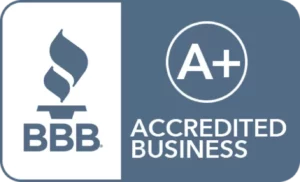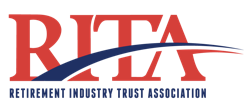The Importance of Asset and Creditor Protection
Asset & creditor protection is a form of guarding the wealth within your Self-Directed IRA. It is important to protect your retirement account against creditors and people who have won lawsuits against you. Under the 2005 Bankruptcy Act, IRAs and 401(k) plans are well protected. It’s important to note that the asset and creditor protection strategies available depend on the type of retirement account you own (Traditional, Roth, 401(k), etc.).
Creditor protection for retirement plans also depends on your state of residency, and whether the assets are yours or you inherited them. Below, we provide asset & creditor protection by state for a Self-Directed IRA.
IRA asset & creditor protection can help protect your assets from lawsuits, creditors, liens, and more. You should protect the assets within your Self-Directed IRA before claims or liabilities. It’s often too late to protect yourself when a claim occurs.
With a Self-Directed IRA LLC, you receive stronger asset and creditor protection. By using an LLC that your IRA owns, you gain an additional layer of limited liability protection. Thus, if you make investments with a Self-Directed IRA LLC, the asset & creditor protection is stronger than if you make the investments on your own. Using a Self-Directed IRA LLC better protects your retirement assets from creditors inside or outside of bankruptcy.
Bankruptcy Abuse Prevention and Consumer Protection Act
BAPCA (Bankruptcy Abuse Prevention and Consumer Protection Act), also known simply as the “Act”, became effective for bankruptcies that were filed after October 17, 2015. The Act gave protection to debtor’s IRA funds by exempting funds from most unsecured business and consumer debts. An unsecured debt is essentially a loan that is not backed by an underlying asset. The exemption provides unlimited exemption for IRAs under section 408(a).
IRA’s Federal Protection for Bankruptcy
Effective April 1, 2022, the maximum aggregate bankruptcy exemption amount for IRAs increased from $1,362,800 to $1,512,350. This exemption amount is subject to cost-of-living adjustments (COLAs), having risen from an initial exemption limit of $1,000,000 as enacted within the Bankruptcy Abuse Prevention and Consumer Protection Act of 2005.
Inherited Retirement Account
Inherited retirement accounts are generally not protected under the Bankruptcy Act. Therefore, your inherited IRA may be subject to creditor attack inside of bankruptcy. If the creditor attack occurs outside of bankruptcy, turn to your state statute to determine whether a creditor who is after you personally can also go after your IRA. It is advised that you speak to a tax attorney/professional in your state beforehand even though most states will protect your account.
IRA Creditor Protection Outside of Bankruptcy
The extensive anti-alienation protection that applies to a 401(k) does not extend to an individual retirement account. This includes a Self-Directed IRA arrangement under Code section 408. Therefore, you must turn to state law for any attacks outside of bankruptcy for any type of IRA, such as traditional and Roth IRAs.
If you have creditors after you personally and you are not filing for bankruptcy, look to your state statute. Most states will provide unlimited protection– however, some states, such as California and Nevada have restrictions on what will be protected within your retirement account. In other words, you will not receive full protection in every state.
For help reading the state statute, it is highly advised to hire an attorney or tax specialist. The attorney will explain what creditors can and cannot obtain from your IRA.
The above rules apply to individuals who are experiencing personal attack. If your IRA makes an investment and is being attacked, the creditor will only be able to go after the IRA and not you. If you have an LLC, the creditor can only go after what is inside of the LLC, nothing outside of the LLC.
Summary of IRA Protection by State
Please see chart at IRA Financial Group
Important Note: IRAs are exempt only to the extent necessary to provide for the support of the judgment debtor when the judgment debtor retires and for the support of the spouse and dependents of the judgment debtor, considering all resources that are likely to be available for the support of the judgment debtor when the judgment debtor retires.
IRA Asset Planning
The bulk of an individual’s savings are within individual retirement accounts. For example, the 2005 Bankruptcy Act protects IRA funds by exempting funds from most unsecured business and consumer debts inside of bankruptcy, and state statute often provides great protection towards IRAs outside of bankruptcy. Because of the significant federal and state protection IRAs receive, such as the Self-Directed IRA, this presents opportunities to protect your assets by establishing a Self-Directed retirement plan.
For example, if you leave an employer who provides a qualified retirement plan, rolling your assets over from the employer plan into an IRA may create asset protection issues. If you live in a state where you have no asset and creditor protection, or your IRA has an excess of $1.2 million in assets, you may benefit by leaving the assets in the company-qualified plan.
IRA assets that you leave to a spouse will likely receive creditor protection if you re-title the IRA in the name of your spouse. However, if you plan to leave some of your IRA funds to your family, other than your spouse, your beneficiaries may not receive creditor protection. However, this depends on where the beneficiaries live. For any beneficiaries other than your spouse, you should leave the IRA assets in a trust. As a result, you must name the trust on the IRA custodian Designation of Beneficiary Form on file.











